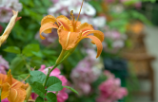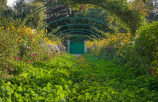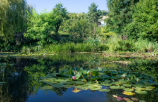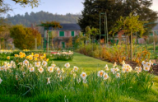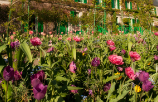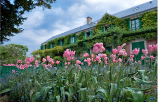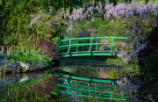Interviews
Rémi Lecoutre: “The entire garden requires an attention to detail.”
Claude Monet’s gardens change their look in May. Deputy head gardener Rémi Lecoutre walks us through the particularities, constraints and wonderful surprises delivered by this transitional phase…
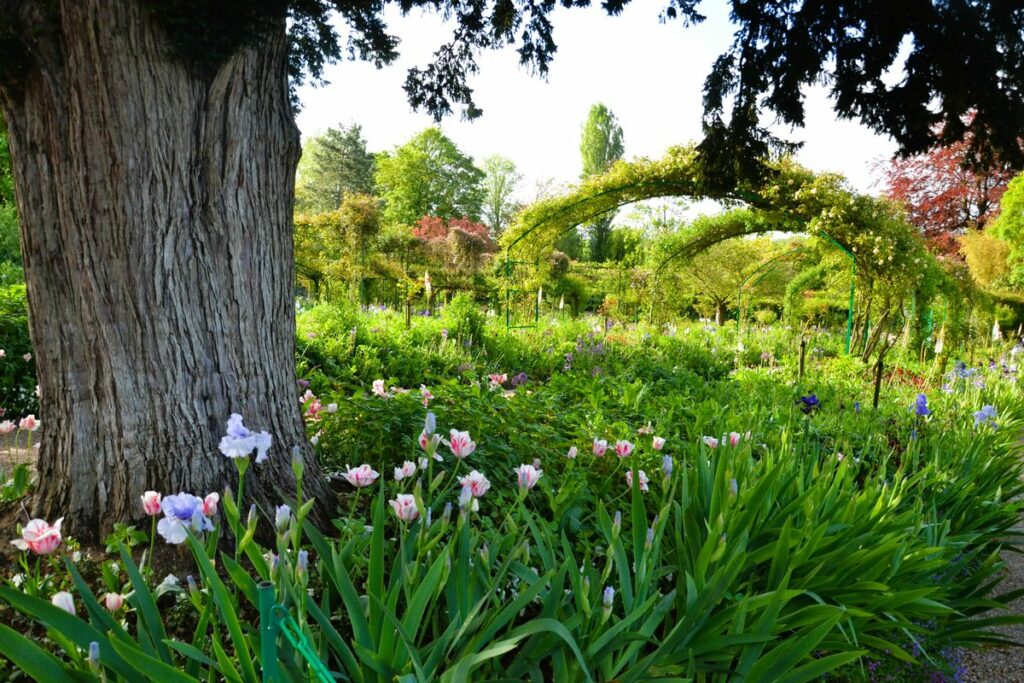
The month of May heralds changes in the garden, triggering the progressive planting of annuals…
The weather is likely to deliver brutal increases and drops in temperature, which is why we are not hurrying to plant everything. In early May we planted frost-resistant annuals, like Abelia grandiflora, Impatiens niamniamensis and Centaurea cyanus, also known as cornflower. When we plant them in sheltered spots, like under a tree, they have more protection. There can be a difference in temperature of up to 2°C compared to an exposed location. We have also planted fire poppies, columbines and daisybushes. The geraniums in front of the house are planted as late as possible because they need sunshine and warmth. Some of the other annuals are still in the tunnels. We will gradually plant out the flower beds, on a case-by-case basis. In fact, the entire garden requires an attention to detail. And we have to balance cultural imperatives with aesthetical needs: the garden must be in bloom all season long.
Do you use transitional plants to maintain the garden’s aesthetic for longer?
Indeed. Some bulbs, like the camassias and alliums, help us a lot in the central path when the tulips become damaged by violent storms or significant changes in temperature. We have Spanish bluebells, which offer good longevity. We also have Geranium tuberosum, Byzantinus communis Italicus and Hesperis. Diversity enables us to prolong our flower beds’ aesthetic.
The geraniums and rose trees will soon take over from the tulips and forget-me-nots in front of the house. A valuable autochrome photo dated 1921 shows Claude Monet posing in front of this flower bed. Since 2020, you also have two historical geraniums. Can we say that this part of the garden has been faithfully recreated?
Absolutely! But we are still working on the edging carnations. In that iconic photo of Claude Monet, you can see the carnations with beautiful silvery foliage. It’s a challenge to find the same carnation as the one that Claude Monet used, especially as many horticultural varieties have disappeared. This year, we are using the same mixture of carnations, plus Dianthus plumarius roseus, which seems to be more robust. I’m also trialling Dianthus plumarius doris which has salmon-pink flowers. It could prove to be a good option as it evokes the salmon-pink render on the house. These tall nasturtiums with their dark red flowers and foliage also remain a mystery.

In May, the flowers that inspired many of Claude Monet’s paintings will be in bloom. Including the must-see irises…
The Dutch irises (Iris hollandica) have grown well and withstood the bad weather. They’ll be followed by the Iris germanica hybrides. Claude Monet also enjoyed papavers. The orange Papaver rupifragum is one of the earliest bloomers and will continue to flower until summer.
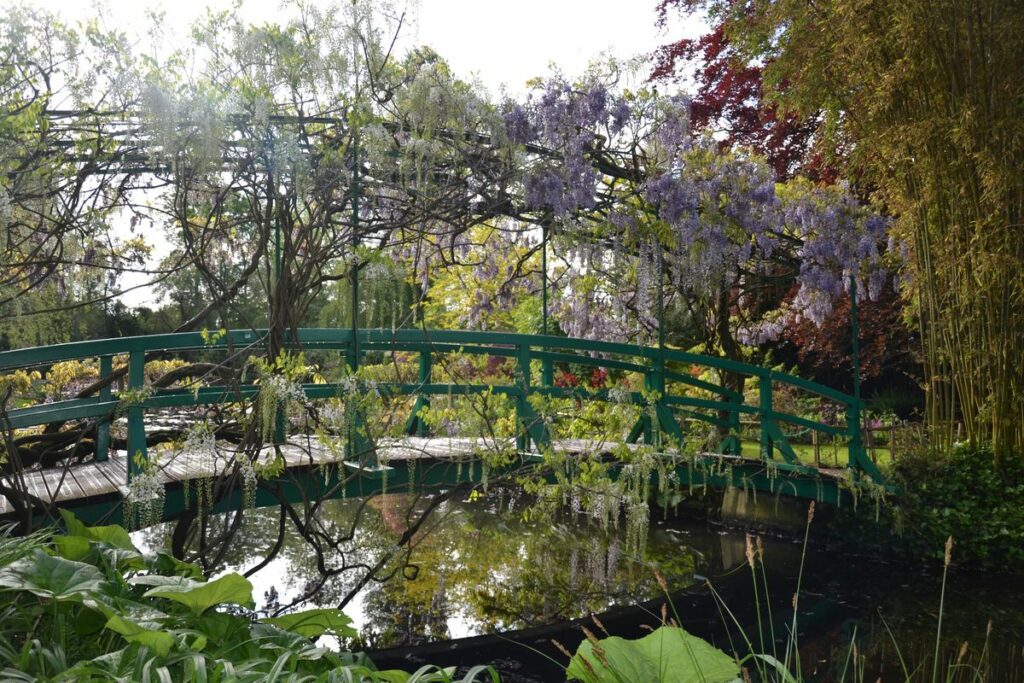
The wisteria – so dear to Claude Monet – is also in full bloom in May…
Visitors can currently see a stunning combination of blooms with the purple Chinese wisteria and the white Japanese wisteria. The white flowers tend to emerge when the purple starts to wane. Protected by our frost-protection system, the purple wisteria is definitely ahead of schedule. I remember reading a letter from Claude Monet to Georges Clemenceau, dated 22 May 1922: “I hoped to see you yesterday but you did not come, which is a pity as the wisteria has never been so beautiful.” That letter highlights how much ahead of schedule we are compared to Claude Monet’s time.
And what about the shrubs in the water garden?
In May, the Judas tree and pink dogwood draw your gaze. The azaleas are blooming early and look beautiful as usual. As in Clos Normand, some plants are on time and other are quite ahead of schedule. So, there’s a bit of a pile-up. The bad weather sorts through them. You’d have to be very clever to predict the future.
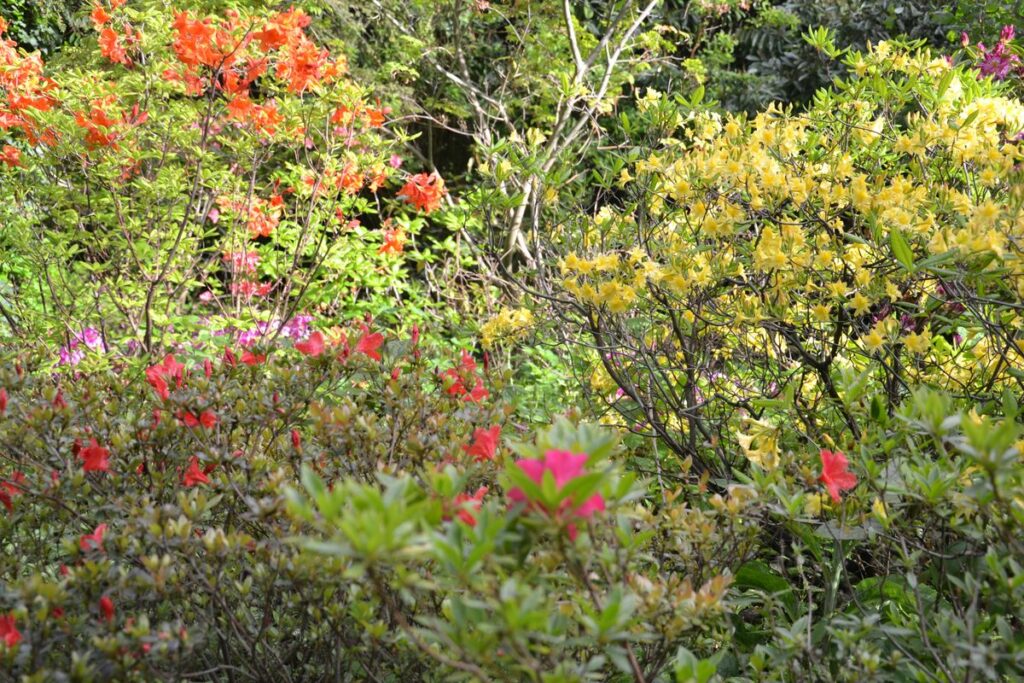
So, will we see the first water lilies in May?
That will depend on the weather and sunlight. Head gardener Jean-Marie Avisard is testing a natural product derived from limestone that will help eliminate unwanted algae suspended in the water, which blocks the light. This will make the pond cleaner so more sunlight can reach the water lilies’ roots. And that will get the water lilies restarted faster.
Why should people visit the garden in May?
With the blue camassias, Spanish bluebells and irises, there’s blue everywhere you look! Of course, not everything is flowering yet. But it’s a very promising period. And it’s popular with visitors who want to also experience an atmosphere.
Claude Monet moved to Giverny in May 1883. What did the garden look like when he arrived?
It was a utilitarian space with a kitchen garden and cider apple trees, among others. Claude Monet was struck by the site’s potential, with its lovely gentle slope and ideal orientation. While he chose to keep the two yews, he hated the cypress and spruce trees that darkened the central path. He chopped them down! In the beginning, he was experimenting because he was travelling a lot and wasn’t spending all his time in the garden. And before he recruited a team of gardeners, he gardened with his family.
Finally, in early May 1886, Claude Monet discovered the colourful tulip fields in Holland. Did that trip influence how he designed his garden?
Indeed. When he arrived home, he wanted to recreate the effect of those expanses of pure colour in monochromatic, rectangular flower beds. Each of his trips, especially his one to Bordighera, guided his gardening.

Rémi Lecoutre, chef jardinier adjoint de la maison et des jardins de Claude Monet – Giverny



